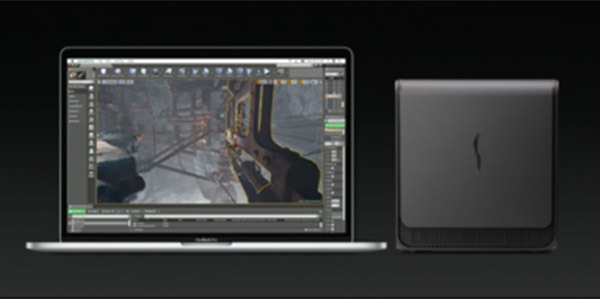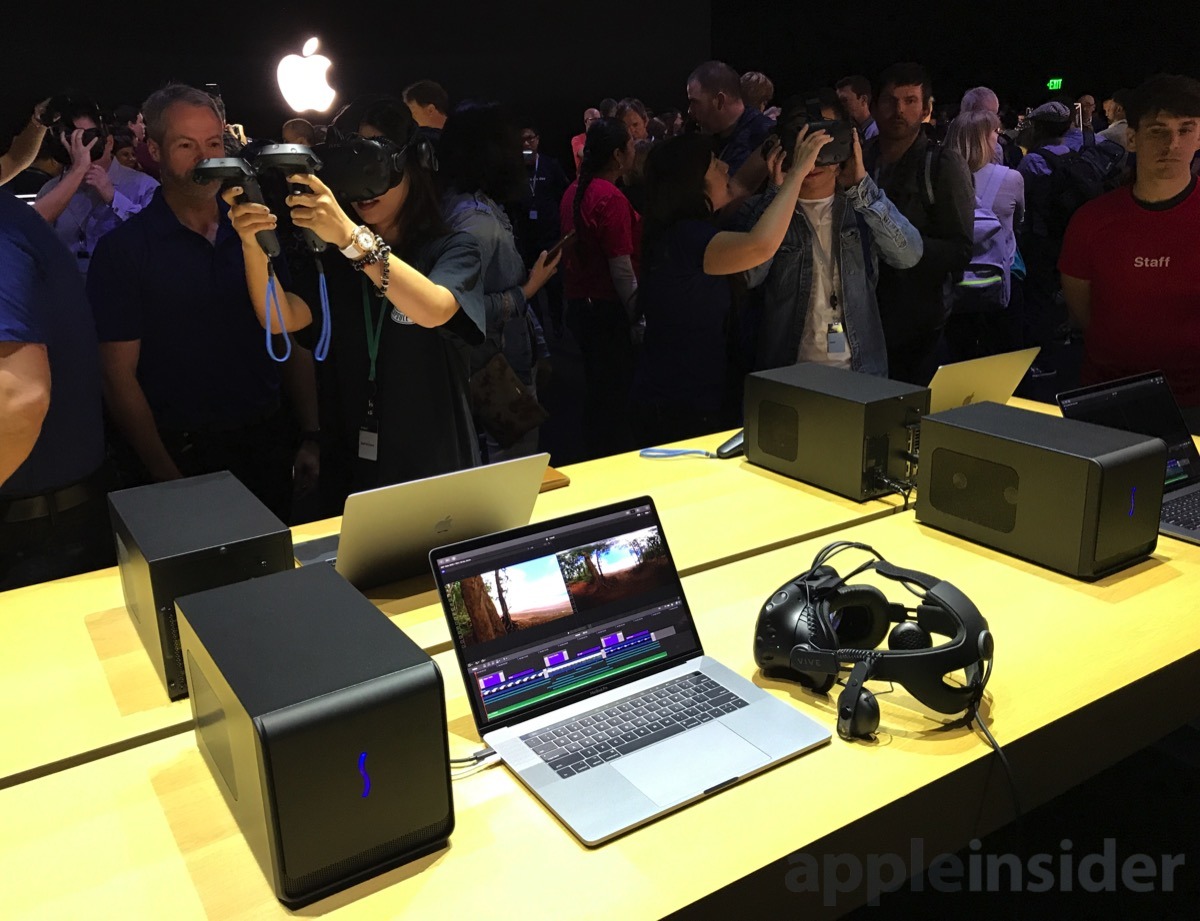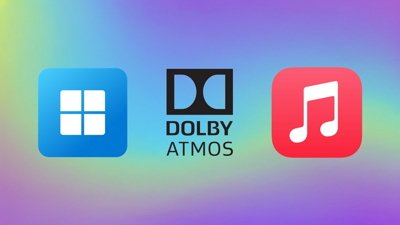Coming this fall as a free upgrade, Apple's new macOS 10.13 High Sierra platform will include support for external graphics cards over Thunderbolt 3, giving systems enough power to support high-end gaming and popular virtual reality platforms.
Introduced alongside Metal 2, Apple's next-generation graphics API, the forthcoming support fulfills a promise made when Thunderbolt ports were first included in Mac years ago. Specifically, Metal 2 includes new assets that work with external GPUs connected over Thunderbolt 3.
To help coders get a head start with creating use cases for Metal 2, Apple will soon be shipping a $599 developer kit that includes the newly announced standalone Sonnet eGFX Breakway Box, a USB-C to USB-A hub, and an AMD Radeon RX 580 GPU. Similar to third-party external GPU solutions, Apple's version shuttles graphics data back and forth using the high-throughput Thunderbolt 3 protocol.
Full support in High Sierra is expected in Spring 2018, according to Apple.
Apple is also baking in support for virtual reality with macOS High Sierra. The company reached out to popular VR platforms like Steam VR, as well as Unreal and Unity, which will offer their services for Mac later this year.
With Metal 2 and backing from outside VR experts, Mac might catch up with machines running Windows. Since PCs offer upgradeable GPUs, including support for the latest high-performance equipment, VR hardware makers like Oculus and HTC have concentrated development of respective goggle hardware on compatibility for Windows based computers. That could change once High Sierra sees release in the fall.
 AppleInsider Staff
AppleInsider Staff









 Andrew Orr
Andrew Orr
 Amber Neely
Amber Neely
 Marko Zivkovic
Marko Zivkovic
 William Gallagher and Mike Wuerthele
William Gallagher and Mike Wuerthele



 Mike Wuerthele
Mike Wuerthele









11 Comments
Hmmm...I wonder as an enterprise dev if I can get one for home use...for learning to develop in metal....
Just keep it simple .... will this allow me to use a video card that makes it possible to create cool stuff in Lumion?
This is the thing the so-called "Pros" don't get.
Thunderbolt 3 has greater throughput than PCI-e which means that you don't need internal upgrades other than RAM as it can all be done over Thunderbolt 3.
In otherwords Thunderbolt 3 makes upgrading your setup infinitely simpler and can in theory even allow for more videos cards to be used than you ever could with a big box Mac. Think about it, from all the big system boards I've seen in the past 5 years in the PC world the most PCI-e ports I've ever seen on a system board were two. That's not a lot of expansion capabilities but with Thunderbolt 3 I believe each port is capable of daisy chaining four Thunderbolt 3 devices. That means this new iMac Pro literally has 16 PCI-e capable ports that can be used at least in theory.
To not call this machine a pro machine is a delusion.
iMac Pro + Apple branded eGPU hardware = Mac Pro replacement?
or is there still a new Mac Pro coming next year?
This will keep the MacBook Pros from six months ago relevant for a long time. The only real features of the new MacBook Pros shipping next week are about 300MHz added performance (which isn't thermally sustainable for very long anyway because: these are laptops) and a next generation GPU (huuuuge for some applications). The ability to drop in desktop-grade GPUs (for vector processing neural nets, 3D/VR/AR modeling, etc) in a macOS-beta-kind-of-supported-way will be great (except for the UltraFine bullshit causing system crashes if the RFI from the external GPU enclosure bleeds into its circuitry, but I digress).